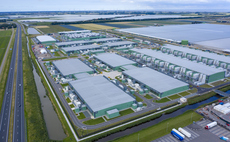Green IT was all about reducing the carbon footprint of the datacentre, but now companies are using software to help reduce emissions and energy consumption across the whole company
The concept of green IT - to help reduce the energy consumption of an organisation's IT infrastructure - should be familiar. However, beyond efficient datacentres and power-managed client estates, ...
To continue reading this article...
Join Computing
- Unlimited access to real-time news, analysis and opinion from the technology industry
- Receive important and breaking news in our daily newsletter
- Be the first to hear about our events and awards programmes
- Join live member only interviews with IT leaders at the ‘IT Lounge’; your chance to ask your burning tech questions and have them answered
- Access to the Computing Delta hub providing market intelligence and research
- Receive our members-only newsletter with exclusive opinion pieces from senior IT Leaders




















